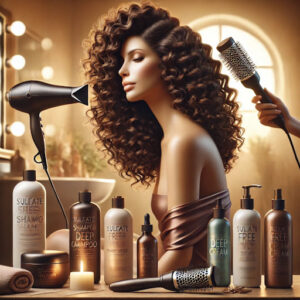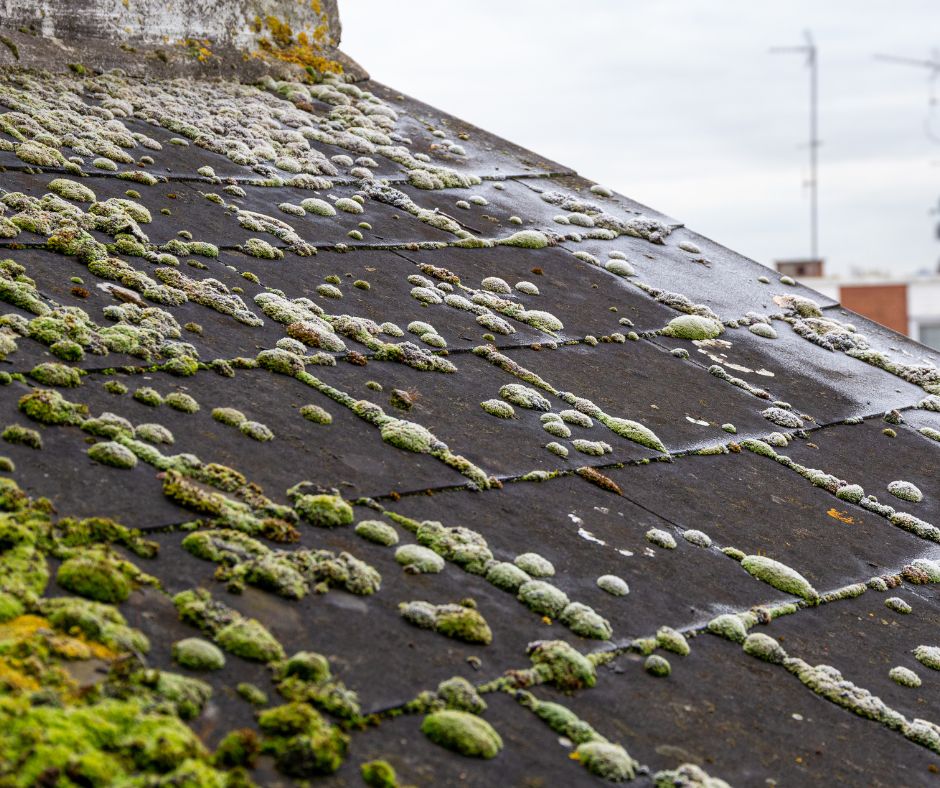Mastering Modern Perm Techniques: Your Ultimate Guide to Achieving Natural Waves
 The intriguing history of perms, widely recognized as permanent waves, is a remarkable journey that spans thousands of years, rich in tradition and cultural significance. The origins of this cherished hair treatment can be traced back to ancient civilizations, particularly in Egypt, where women ingeniously developed basic techniques to curl their hair. They would wrap strands around wooden sticks or use heated metal tools, resulting in beautiful waves and curls that not only reflected their fashion sensibilities but also represented their cultural identity and societal status. Over time, the art of curling hair has evolved significantly, especially with the advent of the first mechanical curling iron in the 19th century, a revolutionary innovation that transformed hairstyling practices forever.
The intriguing history of perms, widely recognized as permanent waves, is a remarkable journey that spans thousands of years, rich in tradition and cultural significance. The origins of this cherished hair treatment can be traced back to ancient civilizations, particularly in Egypt, where women ingeniously developed basic techniques to curl their hair. They would wrap strands around wooden sticks or use heated metal tools, resulting in beautiful waves and curls that not only reflected their fashion sensibilities but also represented their cultural identity and societal status. Over time, the art of curling hair has evolved significantly, especially with the advent of the first mechanical curling iron in the 19th century, a revolutionary innovation that transformed hairstyling practices forever.
The 19th century heralded a pivotal change in hairstyling with the introduction of the mechanical curling iron, a groundbreaking tool that greatly improved hairstyling methods. This innovative device allowed individuals to achieve more uniform and long-lasting curls, laying the foundation for what we now know as the modern perm. As we moved into the 20th century, the world of perms experienced a remarkable transformation, particularly with the introduction of chemical processes. In the 1930s, a visionary German hairdresser, Karl Nessler, pioneered the first chemical perm technique, which utilized a special solution to break down the hair’s natural structure. This innovative approach enabled hair to be reshaped into stunning curls, quickly becoming a sensation in salons across Europe and America. This surge in popularity firmly established the perm as a staple in hairstyling, forever reshaping the landscape of hair fashion.
In the aftermath of the post-war era, perms became an essential aspect of women’s hairstyling, leading to the development of various techniques tailored to accommodate diverse hair types and styling preferences. The vibrant 1980s marked the peak of perm popularity, characterized by voluminous curls and waves that defined the fashion trends of the decade. However, as the 1990s and early 2000s approached, hair trends shifted towards sleeker, straighter styles, resulting in a noticeable decline in perm popularity. Today, we are witnessing a stunning revival of interest in perms, as contemporary techniques now yield softer, more natural-looking waves that resonate with a new generation eager to explore versatility in their hairstyles.
Key Historical Insights on the Evolution and Impact of Perms
- The roots of perms can be traced back to ancient Egypt, evolving into a vital hairstyling technique that continues to hold relevance in today’s beauty industry.
- Selecting the appropriate perm for your hair requires careful consideration of factors such as hair texture, length, and any previous chemical treatments to ensure optimal results.
- The perming procedure involves applying a chemical solution that disrupts and reforms the natural bonds of the hair, necessitating thorough preparation, including avoiding washing and styling products beforehand.
- Maintaining permed hair requires special care and styling methods, such as using sulfate-free products and limiting excessive heat styling to preserve the integrity of the curls.
- Common misconceptions about perms include beliefs regarding hair damage and the notion that they are only suitable for certain hair types.
 Strategic Tips for Choosing the Ideal Perm Tailored to Your Hair Type
Strategic Tips for Choosing the Ideal Perm Tailored to Your Hair Type
Understanding Your Hair Type: The First Step in Perm Selection
Choosing the right perm for your hair involves a thoughtful and nuanced approach that requires careful evaluation of various factors that can influence the final look. A thorough understanding of your hair’s texture is essential. For example, individuals with fine hair may find that opting for a body wave perm provides just the right amount of volume without overwhelming delicate strands. In contrast, those with thicker hair can confidently choose tighter curls that deliver definition and bounce. This personalized method ensures that the perm not only highlights your hair’s natural beauty but also aligns with your individual style preferences, enhancing your overall appearance and confidence.
Evaluating Hair Health and Lifestyle Considerations When Choosing a Perm
Beyond assessing texture, it is crucial to evaluate the overall health of your hair and consider how a perm might fit into your daily routine. If your hair has experienced damage or undergone extensive processing, selecting a gentler option may be wise, such as a digital or cold perm that utilizes lower heat and milder chemical solutions. Consulting with a professional stylist can provide invaluable insights, guiding you toward a perm that best suits your specific hair characteristics. Moreover, consider your lifestyle and maintenance preferences; for individuals with busy schedules, loose waves or beachy curls might represent the most suitable low-maintenance choice while still allowing for stylish flexibility.
Incorporating Face Shape and Personal Style into Your Perm Decision
Another critical aspect to consider is how your chosen perm can enhance your face shape and overall aesthetic appeal. For instance, soft waves can beautifully frame your face, while tighter curls can introduce volume and height. By taking these factors into account, you can make an informed decision that not only reflects your personal style but also integrates seamlessly into your hair care routine. By thoroughly evaluating these elements, you can select a perm that accentuates your features while aligning with your styling preferences, ensuring a look that is distinctly yours and uniquely flattering.
Detailed Overview of the Perming Process: What to Anticipate and How to Get Ready
Embarking on the journey to get a perm can evoke a mix of excitement and nervousness. To ensure a smooth experience, it is essential to comprehend the steps that comprise the process. Initially, scheduling a consultation with your stylist is critical. They will assess your hair type and discuss your desired outcome, laying the foundation for the entire perming experience. This step is vital for establishing realistic expectations and ensuring that both you and your stylist are aligned on the vision for your new look.
Once you and your stylist have agreed on a specific style, the next step involves washing your hair with a clarifying shampoo. This crucial step removes any product buildup, allowing the perm solution to penetrate the hair effectively. After washing, your hair will be sectioned and wrapped around perm rods according to the desired curl size—smaller rods yield tighter curls, whereas larger ones create looser waves. Following this wrapping process, the stylist will apply a specially formulated perm solution designed to break down the protein structure of your hair, preparing it to adopt the shape of the rods.
Preparation for this stage is essential, as it requires time; careful application and monitoring are key to achieving optimal results. After allowing the solution to set for a specified duration, your stylist will thoroughly rinse your hair before applying a neutralizer, which is crucial for reforming the hair’s structure into its new curl pattern. Finally, after rinsing out the neutralizer, you will be able to enjoy your fresh curls or waves! Although this entire process can take several hours depending on your hair’s length and thickness, the stunning results often justify the time invested and enhance your overall style.
 Vital Maintenance Tips for Preserving the Beauty of Your Permed Hair
Vital Maintenance Tips for Preserving the Beauty of Your Permed Hair
Once you’ve embraced your stylish new perm, ensuring proper care is essential for maintaining its beauty and longevity. An important initial step in caring for permed hair is to avoid washing it for at least 48 hours following the perm procedure. This waiting period is critical for allowing the curls to set correctly, ensuring that the chemical bonds formed during the process remain intact and vibrant, providing you with lasting style.
When it’s finally time to wash your hair, opt for sulfate-free shampoos specifically designed for chemically treated hair. These specialized products work to retain essential moisture while minimizing frizz, allowing your beautiful curls to flourish. Additionally, incorporating regular deep conditioning treatments into your hair care regimen can greatly enhance the health and manageability of your permed hair, keeping it looking vibrant and bouncy.
Styling permed hair requires a unique approach compared to styling straight hair. Embrace products specifically formulated for curly hair, such as curl creams or mousses, which provide hold without weighing down your curls. For enhanced curl definition, scrunch your hair while it’s damp, and consider using a diffuser attachment on your blow dryer to add volume without disturbing the curl pattern. Furthermore, it’s advisable to minimize the use of excessive heat styling tools, as they can compromise the integrity of your permed hair over time. Instead, allow your hair to air dry whenever possible, or utilize low heat settings when necessary. By following these maintenance strategies and using products tailored for curly hair, you can enjoy vibrant, long-lasting curls that elevate your style.
Dispelling Common Myths Surrounding Perms
As we delve into the captivating world of perms, we often encounter myths and misconceptions that can obscure our understanding of this beloved hair styling choice. One prevalent myth suggests that perms are only suitable for specific hair types or lengths; however, this is a misconception. While individual hair characteristics should certainly influence the choice of perm style, advancements in perming techniques have made it possible for individuals with a variety of hair types—whether straight, wavy, thick, or fine—to achieve stunning curls and waves that enhance their beauty.
Another widespread misunderstanding is that perms inherently damage hair. While it is true that chemical processes can affect hair health if not executed properly or if inadequate care is taken afterward, modern formulations have become substantially gentler compared to those used in earlier decades. Additionally, some people mistakenly believe that once a perm is performed, the curls are permanent and cannot be altered. In reality, perms typically last between three to six months, with the longevity influenced by factors such as hair type and maintenance practices.
As your natural hair grows, you will observe that the curls gradually loosen over time. Moreover, many erroneously believe that permed hair necessitates extensive styling each day; however, with the right care and product choices, maintaining permed hair can be relatively effortless. By dispelling these myths and misconceptions surrounding perms, we empower ourselves to make informed decisions about our hairstyles, free from fear and uncertainty.
 Evaluating the Pros and Cons of Getting a Perm: Is It the Right Decision for You?
Evaluating the Pros and Cons of Getting a Perm: Is It the Right Decision for You?
When contemplating whether to pursue a perm, it is essential to carefully weigh the benefits against the potential drawbacks. One significant advantage of opting for a perm is its versatility; with curls or waves established, you can enjoy a myriad of styling options without the daily reliance on heat styling tools, which can be damaging over time. Furthermore, perms can add volume and texture to fine or limp hair, creating the fuller look that many desire.
For individuals who find it difficult to curl their straight hair consistently, a perm offers a long-lasting solution that simplifies daily hair routines. However, there are potential downsides to consider before making a commitment to a perm. The time-intensive nature of achieving the desired results can lead to a higher initial investment compared to other hairstyling alternatives.
Additionally, maintaining permed hair necessitates specific products and care routines that might not suit everyone’s lifestyle or budget. It’s also important to recognize that while modern perms are gentler than their predecessors, there remains a risk of damage if proper precautions are not taken during the process or afterward. Ultimately, deciding whether a perm is the right choice involves reflecting on your styling preferences, maintenance capabilities, and willingness to adapt your hairstyling routine to accommodate this exciting treatment.
Exploring the intricate world of perms reveals a rich history intertwined with cultural significance and evolving beauty standards. As you navigate the process of selecting the perfect perm for your unique hair type and learn what to expect throughout your journey, you empower yourself with the knowledge necessary to enhance your hairstyling experience. By employing effective care strategies after receiving a perm and dispelling common myths associated with this cherished treatment, you can confidently assess whether a perm aligns with your stylistic aspirations and lifestyle needs.
Whether you choose to showcase stunning curls or soft waves as part of your identity or relish the opportunity to experiment with diverse looks over time, perms offer an exhilarating pathway for self-expression within the ever-evolving landscape of beauty trends.
Commonly Asked Questions About Perms
What is a perm, and how does it work?
A perm, short for permanent wave, is a chemical treatment that alters the hair’s natural texture, creating curls or waves that can last for an extended period.
How long should I expect my perm to last?
The longevity of a perm depends on individual hair type and aftercare practices; generally, it can last anywhere from 2 to 6 months.
What types of perms are available in today’s market?
There are various types of perms, including body wave, spiral, and digital perms, each offering distinct styles of curls or waves tailored to different preferences.
Can you explain the perming process in detail?
During a perm, the hair is carefully wrapped around rods, and a chemical solution is applied to break and reform the hair’s natural bonds, resulting in the desired curls or waves.
What are the crucial aftercare guidelines for maintaining a perm?
After receiving a perm, it is vital to refrain from washing the hair for at least 48 hours, use sulfate-free shampoos and conditioners, and minimize heat styling to preserve the integrity of the curls or waves.
Presented By: Perms @ Amitys
The Article: Perms: Your Essential Guide to Gorgeous Curly Hair appeared first on Amitys Hair Salon.
The Article Perms: The Ultimate Guide to Beautiful Curly Hair Was Found On https://limitsofstrategy.com
References:
Perms: The Ultimate Guide to Beautiful Curly Hair



